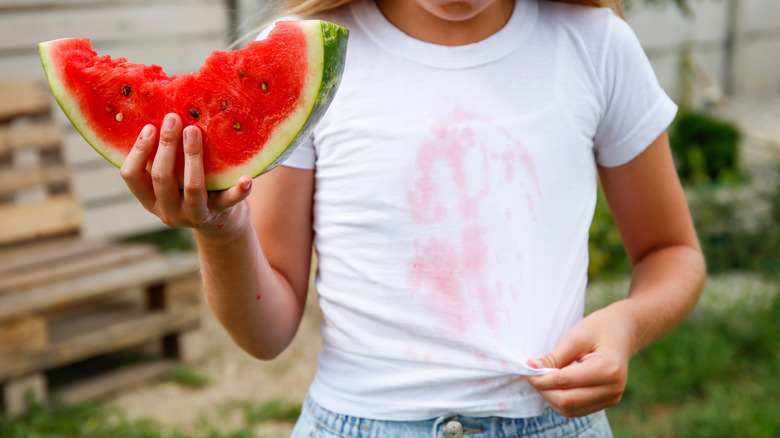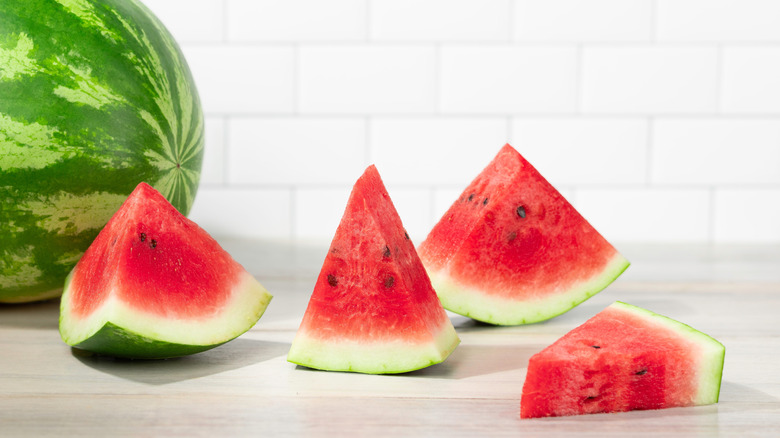Why Watermelon Stains Clothes (And How To Get Rid Of Nasty Ones)
We may receive a commission on purchases made from links.
Watermelon sandwiches may be a juicy delight, and watermelon kegs will lend your backyard party a certain frat house nostalgia, but there is a downside to this mega-melon: Watery though it may be, the juice can still stain your shirt. How does that happen? Blame lycopene, which causes the pink pigment. This is the same substance that makes tomatoes red — and you know how tomatoes can stain.
So how can you get that watermelon stain out of your shirt? Time is very much of the essence, since the older the stain, the harder it is to get out. If it's still light pink instead of yellow or brown, though, you could start by pouring boiling water through the fabric while holding it over the sink. This is an effective method for removing fruit stains in general, and some people have reported that it works with watermelon, too. Others have had less success, however (possibly because the stains were older), so you might need to soak the spot in an enzyme stain remover or some liquid detergent or dish soap. According to one Redditor, a soap called Fels Naptha works well, too. If none of these items do the trick, try soaking the stained item in a solution of oxygen-based bleach (the powdered kind, as opposed to the liquid chlorine bleach).
Once the stain appears to be gone, you can toss that shirt in the laundry and wash it as usual. Unless you're 100% certain you've erased every last trace of watermelon juice, though, it's best to let it hang dry since the hot air from a tumble dryer can bake stains in permanently.
Removing watermelon stains from other surfaces
What can you do if you've spilled watermelon juice on the sofa, carpet, or patio? If you're dealing with a soft surface, such as fabric or upholstery, sponge it off with some warm water to which you've added a little dish soap or oxygen bleach. Continue sponging until the stain appears to be gone, then use plain water to remove any remaining traces of soap or bleach. Should the surface be flattened by your sponging, using a vacuum cleaner or a hand-held vacuum will help fluff it up again. If sponging the stain off doesn't work, you can also try a spray-on solvent carpet cleaner, as these are often effective against lycopene-based stains, such as those from watermelon and tomato.
If you're cleaning a hard surface such as concrete, cover the stain with a mixture of baking soda and water. Rinse it off, then use an enzymatic cleaner to "digest" any remaining watermelon juice. You could also try rubbing a little cooking oil into the stain, since lycopene dissolves better in oil than in water.
For watermelon-stained plastic containers, there are two methods you can try. The cheaper option involves making a thick paste of baking soda and water, then rubbing it all over the stains and letting it sit for half an hour. At this point, scrub the paste around with a sponge or brush, then rinse it out. An even more effective, if pricier, method of stain removal is to cover the stain with hand sanitizer for 45 minutes before thoroughly washing it off. Unlike baking soda, hand sanitizer isn't safe for human consumption, but then again, neither is dish soap. This is why we rinse.

